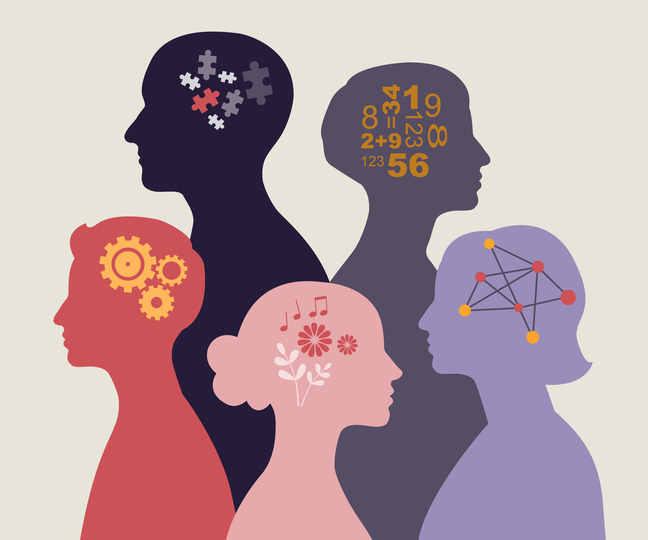The intersectionality of neurodiversity and physical disabilities can have a profound impact in the workplace and on society. Christine’s journey began with challenges that many would find insurmountable. Displaying signs of autism spectrum disorder as a child and having been diagnosed with Biedl-Bardet Syndrome, a condition that caused her to be legally blind, she navigated a world not designed to her benefit. Yet, where some saw limitations, Christine saw opportunities to excel — her neurodiversity providing her with unparalleled attention to detail and an extraordinary memory.
With technology, it’s essential to meet accessibility standards so that as many people as possible can utilize its advantages. Christine, with her acute understanding of accessibility needs, found purpose as a quality assurance analyst through CAI Neurodiverse Solutions for enGen. She tests websites to ensure they are navigable for those using screen readers. Christine taps her skills and takes an empathetic approach when improving accessibility to help others who have similar physical disabilities. Her role is not just a job — it’s a mission to make the digital world accessible to everyone.
What is neurodiversity, exactly?
Neurodiversity refers to the differences in brain function that include but are not limited to, autism spectrum disorder, attention-deficit hyperactivity disorder, dyslexia and dyspraxia. Between pattern recognition, attention to detail and other skills, employers can tap into a talent pool that can drive business value.
Currently, only about 20% of people with disabilities are employed, according to the U.S. Bureau of Labor Statistics. Yet the benefits of hiring neurodiverse talent are increasingly evident. A study by the Harvard Business Review highlighted that neurodiverse teams can be 30% more productive than their counterparts. Employers that have embraced neurodiversity have witnessed firsthand the innovation and dedication that come from a blended workforce of neurotypical and neurodivergent individuals.
To recruit, hire and retain neurodivergent individuals, organizations can implement employment programs to create an empathetic and inclusive workplace culture. This involves rethinking traditional hiring practices, offering supportive work environments and providing the tools and accommodations that enable neurodivergent employees to excel. For the hiring process, this means crafting job descriptions with clear requirements, removing panel-style interviews and partnering with organizations that can offer best practices. In today’s dynamic workforce, retention involves employers fostering a culture of empathy, inclusivity and continuous learning where neurodivergent employees can not only bring their full selves to work but thrive in their careers.
Workplace challenges and accommodations
Tailored support systems, such as mentorship programs, can provide guidance and reassurance. Flexible work arrangements and personalized workspaces can help neurodivergent individuals manage sensory challenges and optimize their productivity. By embedding these practices, employers can ensure that neurodiverse talent knows they are valued and integral to the organization’s success.
Simple accommodations, however, can make all the difference, transforming potential challenges into smooth experiences. These can be straightforward, such as providing noise-cancelling headphones to reduce auditory distractions, using agendas before meetings to help prepare for the conversation or placing desks away from high-traffic areas to reduce anxiety and other stressors.
The value of these accommodations extends beyond the immediate benefit to neurodivergent individuals and onto the entire organization, as they enhance overall productivity and job satisfaction. When employees feel supported in their work environment, they are more engaged, loyal and motivated to contribute, demonstrating that inclusivity is a smart business strategy.
Benefits for companies and people
Christine’s success is not an isolated event. It is part of a growing narrative that recognizes the untapped potential of the neurodiverse community. As digital accessibility can no longer be an afterthought, Christine and her colleagues are leading the charge, ensuring that everyone has equal access to information and technology.
Career mobility and helping neurodivergent employees thrive take neurodiversity employment programs a step further. With neurodiversity-certified team leads, employees can have the mentorship and advocacy needed to grow. It’s about recognizing achievements and offering pathways to new opportunities. For Christine, her role is not a static one — it’s a stepping stone to greater contributions and leadership in the field of digital accessibility.
“I am a first-hand example of a person who requires digital accessibility to do my job as well as day-to-day activities. I benefit from the work that I do at CAI,” Christine says.
It’s a reciprocal relationship — where the work not only impacts the individual but is also shaped by them, helping employers be more innovative and productive.
Opinions expressed by SmartBrief contributors are their own.
_________________________
Subscribe to SmartBrief’s FREE email newsletter on leadership. It’s among SmartBrief’s more than 250 industry-focused newsletters.
